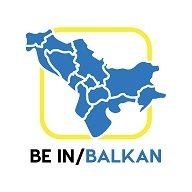Balkan Culture

Culture
Each era and historical stage of the Balkans has its own symbols, treasured by its people, and all these various civilizations and traditions make Balkans a real gem for travelers all over the world who want to take a leap into the past and enrich their knowledge and senses. Explore our archeological parks, natural parks, fortresses, religious monuments, museums and galleries.
The Balkan countries are characterized by patriarchal tradition and strong community and neighborhood networks. Family has great importance to people here and neighborhood and friendship ties follow right behind. Children often live with their parents well into adulthood or until they move out at marriage. It is not rare that, later on, parents, when in their old age, move in to live with their children. Therefore, elders are highly respected. Grandparents have a great influence in raising children and very often have the most authority in other family matters as well.
Among the current modern times, the former customs and traditions are gradually vanishing due to the influence of the western world which has even reached remote areas of the country. Old customs and traditions still remain well preserved in rural areas, however. In the major cities of the country, families consist of the parents and children until the latter wish to live separately. Nowadays, females are very frequently well-educated and considered equal members in the families with the freedom to organize and live modern westernized lifestyles.
Diversity
Due to its geostrategic position in the Europe, Balkans as a peninsula was conquered by numerous different civilizations. Legacy left behind these civilizations led to creating a perfect blend of culture and arts into a mosaic phenomenon which perfectly reflects their roots and combines old and modern times. From the Greek to The Ottoman Empires who ruled over numerous borders of this peninsula for a lot of centuries, left behind strong influence upon religion, culture and customs. Numerous traces of Turkish architecture is to be visited in old cities across Balkan Countries. Most trading quarters were established during the Ottoman rule, and remain strong to this day. The Ottoman culture is also portrayed through old crafts, local cuisine and everyday customs. The Austro-Hungarian Monarchy which inherited the Ottoman era was mostly focused on developing infrastructure including numerous public institutions and buildings, industries and mines, and an extensive railway and road network, and remains a great part of the architectural wealth of various countries inside Balkans.
Art l Music l Theater
More than in any other region in Europe, the Balkans have adopted a blend of cultural influences. For centuries, different cultures, traditions, customs and religions have passed through the region, each leaving something behind and, at the same time, transforming and adapting to the next. Traditional handwork of copper-engravers from Sarajevo or famous stonecutters from Dubrovnik, as well as music and folklore from different regions, and international writers, Nobel Prize winners, alongside the western influenced fine arts, have all contributed to our rich multi-cultural heritage.
Art, Music and Theatre as part of the artistic flair of a region, have a lot of significances especially in the Balkans. Since the region of Balkans is made up of 12 countries, each of these countries individually bring a knack of creativity to the table of artistry. Belgrade (Serbia), a city without past, from workshops of Mostar to the walls of Kotor and Cetinje, all the way to open artworks in famous capital cities of countries such as Albania, Kosovo, Slovenia, Turkey and Bosnia all give tourists a heartwarming welcome to a world of art.
Balkan’s music is characterized by a ton of rhythm, perpetually influenced by Byzantine medieval music, Ottoman and Greek music. Pre-modern Balkan music was molded from Bulgarian and Serbian traditional music. Folk music remains a genre most likable among Balkans.
Religion
Religion plays a huge role into establishing the harmonious diversity across the Balkans. In general, the religion groups inside the Balkans belong to either one of these religions; eastern orthodoxy, Roman Catholicism, Islam, and 10% of the population is undeclared or belongs to other smaller religious groups.
Architecture
In the Balkans, a tourist can find traces of the development of architecture from late antiquity to the height of the Ottoman Empire, all while experiencing baroque, Goth, and contemporary architecture as well. Some of the most wonderful architectural wonders can be seen only if you visit the Balkans.
